Bergen is said to be the wettest city in Europe and while that may be an exaggeration it certainly rains there a lot, as my wife and I discovered on our first visit. It was late spring and we had already travelled through a blizzard on the train from Oslo.
Unprepared and poorly dressed for the weather, one of the first things I did was to buy a raincoat. Prices in Norway can be eye-watering so I chose something inexpensive, thinking it only needed to last for the trip, but I’m pleased to report that it’s still wearing well today. So you can get good quality goods in Norway without spending up big, if you shop around.
I applied the same principle to our accommodation, staying at one of the Thon chain hotels – the Thon Orion in the Bryggen area – which was relatively easy on the budget as well as conveniently situated.
But the weather should not detract from the beauty of this, Norway's second-largest city and its busiest port, where you can feast your eyes on the colourful former warehouses of Bryggen and the harbour jam-packed with cargo ships, vessels serving the offshore oil and gas industry and cruise liners, all set against a mountainous backdrop.
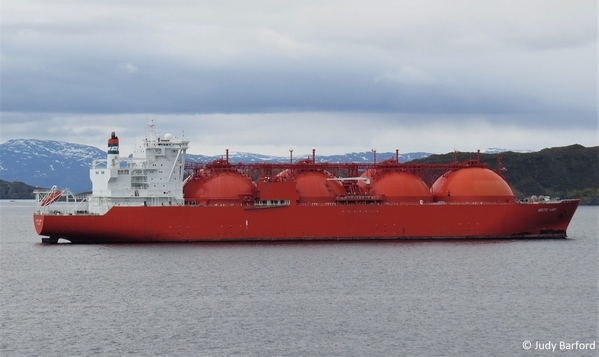
Although not a huge city, Bergen is more sprawling than you might imagine. The best way to observe this is to take the Floibanen funicular up to Mount Floyen (above) for a spectacular view of the city. With its layout firmly fixed in the memory, descend and start exploring the waterfront and backstreets of this attractive city.
Bryggen
The very first buildings in Bergen were situated at Bryggen, which has been a vibrant and important area of the city for many centuries.
Bryggen has been ravaged by many fires, especially the great fire of 1702 which reduced the entire city to ashes. The area was rebuilt on the foundations that had been there since the 12th century, so there are some roots that go back a very long way. In 1979 Bryggen was listed by UNESCO as Norway’s first World Heritage site. It is a great place to watch the activity in the bustling harbour while enjoying a snack bought from the seafood markets on the waterfront.
Today, there are several attractions in the area, from the fish market to Bergenhus Fortress and there are many cafés, restaurants and shops to choose from. Wander away from the waterfront and you’ll find a hidden world of passages, small shops, galleries and studios just waiting to be photographed.
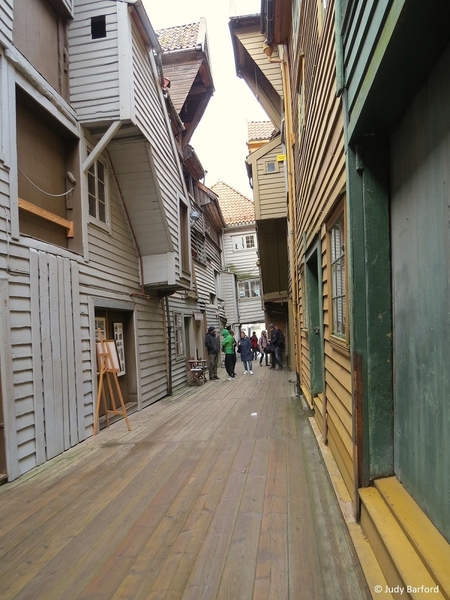
"It's bitterly cold!" Cool cat of Bergen.
The Hanseatic Museum is an interesting place to visit, telling the story of the old German-founded Hanseatic League, which operated one of its import-export offices at Bryggen between 1360 and 1754, dominating trade for almost 400 years.
Fjords and coast
Bergen is the natural jumping off point for trips to the Norwegian fjords and several tours are available ranging from a couple of hours to a whole day. These include the popular Bergen-Mostraumen three-hour cruise, which runs every day of the year.
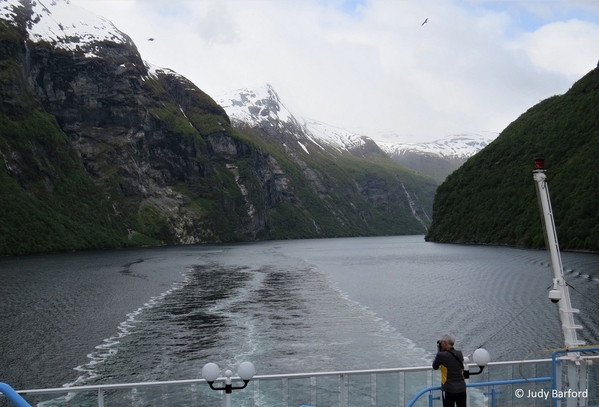 It navigates up the 27-kilometre-long Osterfjord, through the narrow Mostraumen straits towards Modalen, the country’s second smallest municipality with only around 380 inhabitants. Tickets are available from the local tourist information office or at the quay near the fish market.
It navigates up the 27-kilometre-long Osterfjord, through the narrow Mostraumen straits towards Modalen, the country’s second smallest municipality with only around 380 inhabitants. Tickets are available from the local tourist information office or at the quay near the fish market.
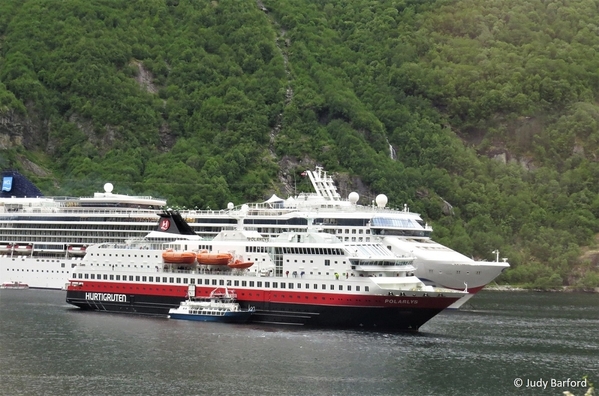 From Bergen the famous Hurtigruten coastal freight and passenger service begins its long journey north to Kirkenes with 34 port calls along the way, before returning to Bergen. This is the classic voyage that has connected remote communities along the Norwegian coast for 128 years. You can join the voyage if you have 12 days to spare.
From Bergen the famous Hurtigruten coastal freight and passenger service begins its long journey north to Kirkenes with 34 port calls along the way, before returning to Bergen. This is the classic voyage that has connected remote communities along the Norwegian coast for 128 years. You can join the voyage if you have 12 days to spare.
We took this route on a second visit to Bergen (although with Norwegian Cruise Line, not Hurtigruten) and visited many of the coastal towns and cities including Honningsvag, Tromso and Trondheim.
The itinerary takes you across the Arctic Circle. Pictured above are the navigation beacon and Arctic Circle Monument marking the crossing point at latitude 66 degrees 33 minutes north. From the final arrival port of Kirkenes you can visit the Norwegian-Russian border at Storskog (below), just 10 kilometres away.
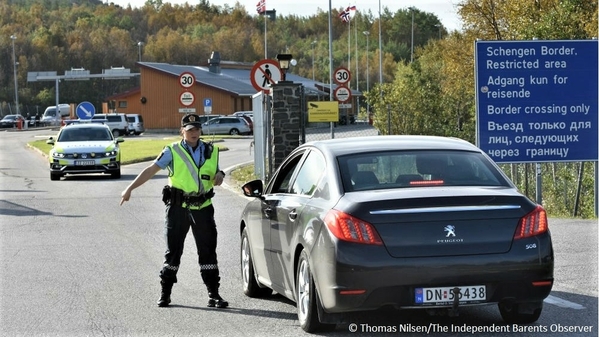 If you ever go here, be careful where you point your camera. Border officials on both sides are touchy about photography and taking shots of any military installation is strictly forbidden. To get a good photo I relied on local media, who seem to know what they can and can’t get away with.
If you ever go here, be careful where you point your camera. Border officials on both sides are touchy about photography and taking shots of any military installation is strictly forbidden. To get a good photo I relied on local media, who seem to know what they can and can’t get away with.
But I digress; back to Bergen and in particular, Troldhaugen.
Classical music lovers will be familiar with the piano piece, Wedding Day at Troldhaugen, written by composer Edvard Grieg for his wife, Nina, on the occasion of their 25th wedding anniversary. From Bergen it’s easy to visit Troldhaugen, the house (above) where Grieg lived for 20 years. There is also the splendid Fantoft stave church in the area (below) and it’s worth a visit as well. A stave church is a medieval Christian place of worship, mostly built in Norway between 1150 and 1350. This one was built in the village of Fortun in 1150 and moved to Fantoft in 1883. It burnt down in 1992 and has been painstakingly rebuilt exactly as it was before the fire.
Both can be reached by taking the light rail (below) from the centre of town and alighting at Hop for Grieg's house – just follow the signs to Troldhaugen but be prepared to walk for 15-20 minutes – and at Fantoft or Paradis for the stave church, a much shorter walk.
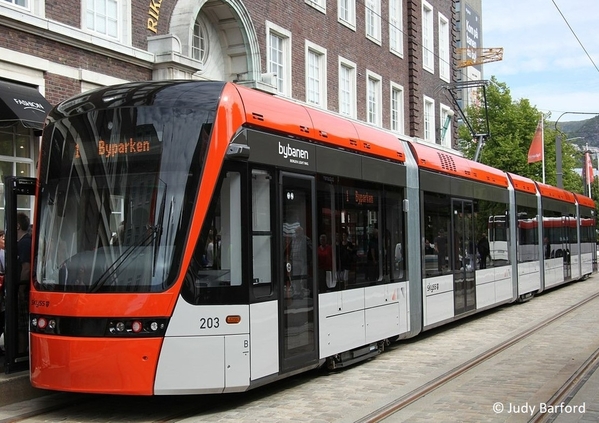
Flam
While in Bergen take the opportunity to ride the world-famous Flam Railway. Over the course of one hour the train takes you from Myrdal station, situated 867 metres above sea level, to the sea level Aurlandsfjord in Flåm.
From the comfort of a vintage train compartment, you can enjoy the changing scenery of the Flåm Valley. During the steep descent the train runs through agricultural landscapes dotted with farms, the old Flåm village centre and past the old church. The Flamselvi River follows the railway for much of the trip.
The train takes a five-minute photo stop at the Kjosfossen waterfall where you can disembark and go out onto the platform.
Take the Bergen-Oslo train to Myrdal for the connection and allow a full day for the return trip, which can be combined with a ferry ride.
When we left Bergen we took the train once again – one of our favourite modes of transport, especially in Europe – and travelled all the way to Stockholm, Sweden, the subject of another story.

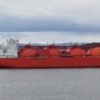
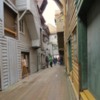
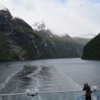


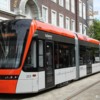
Comments (0)